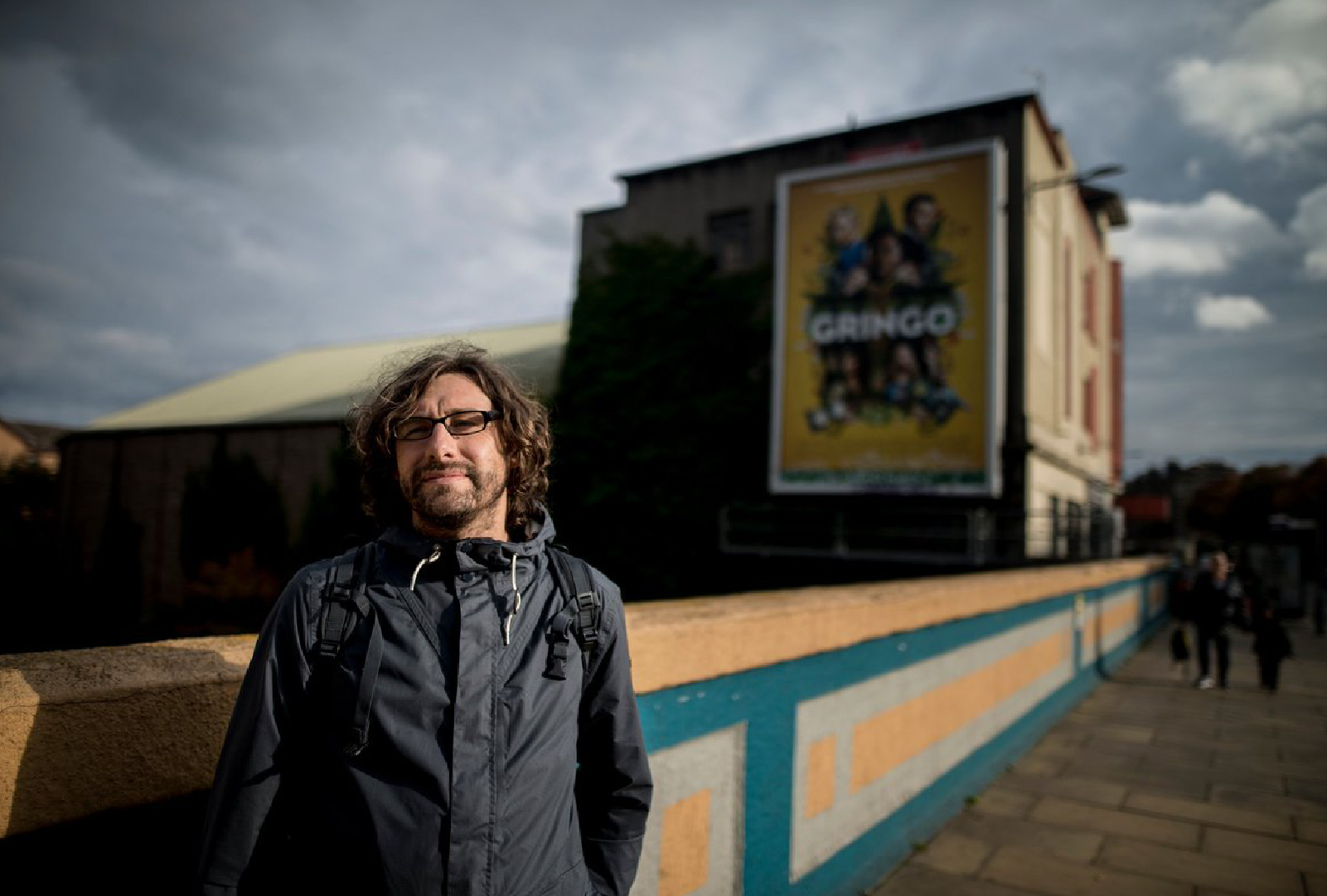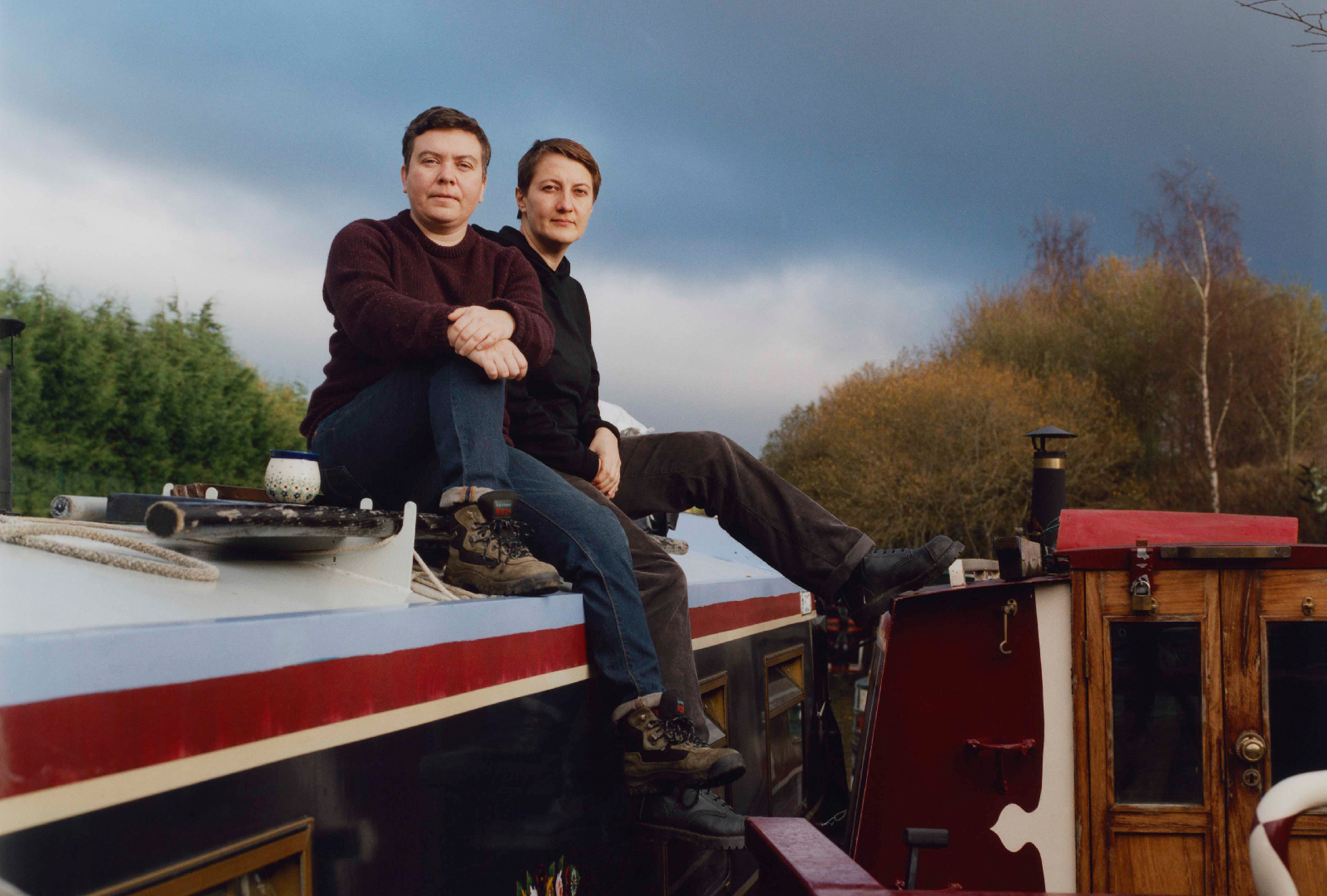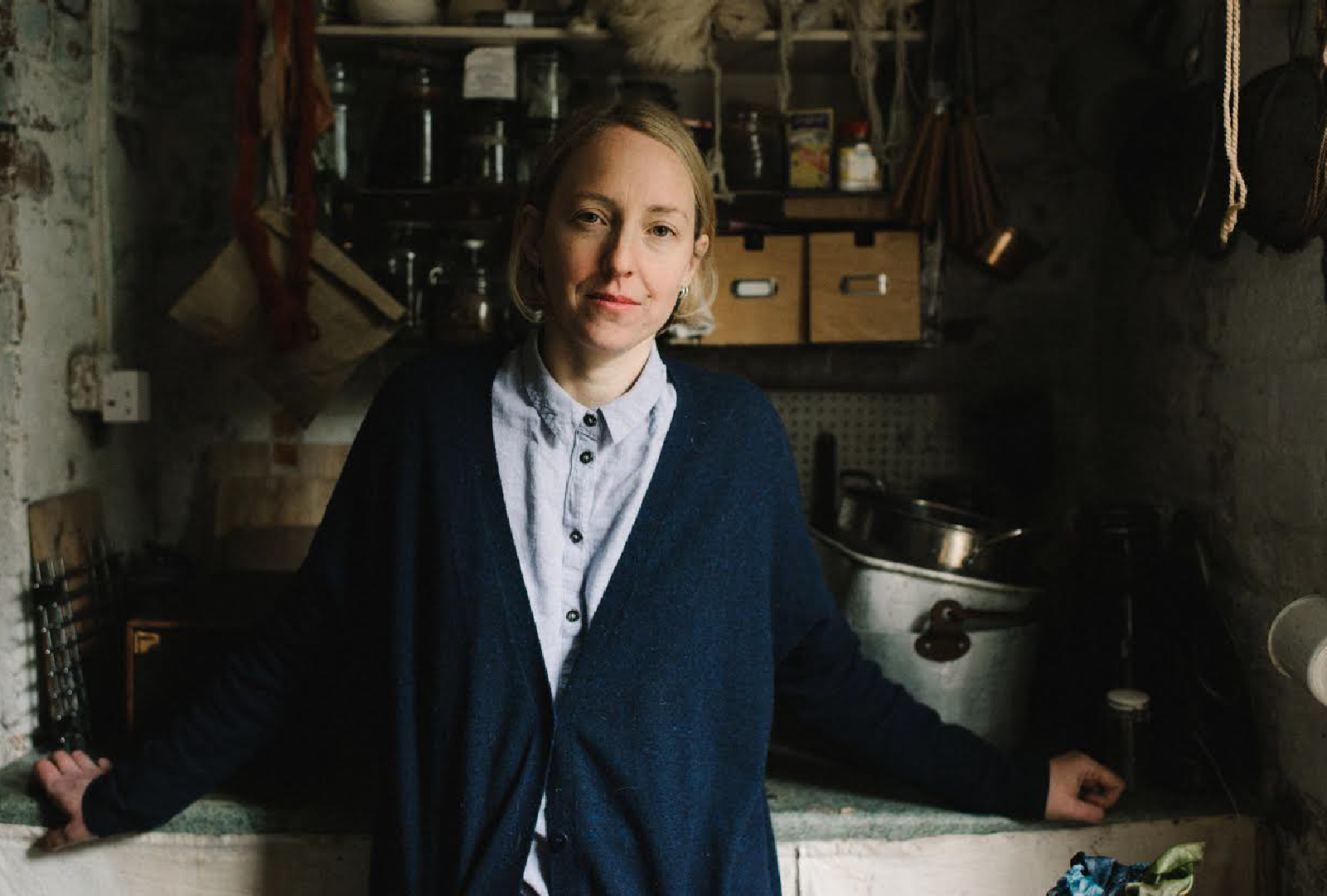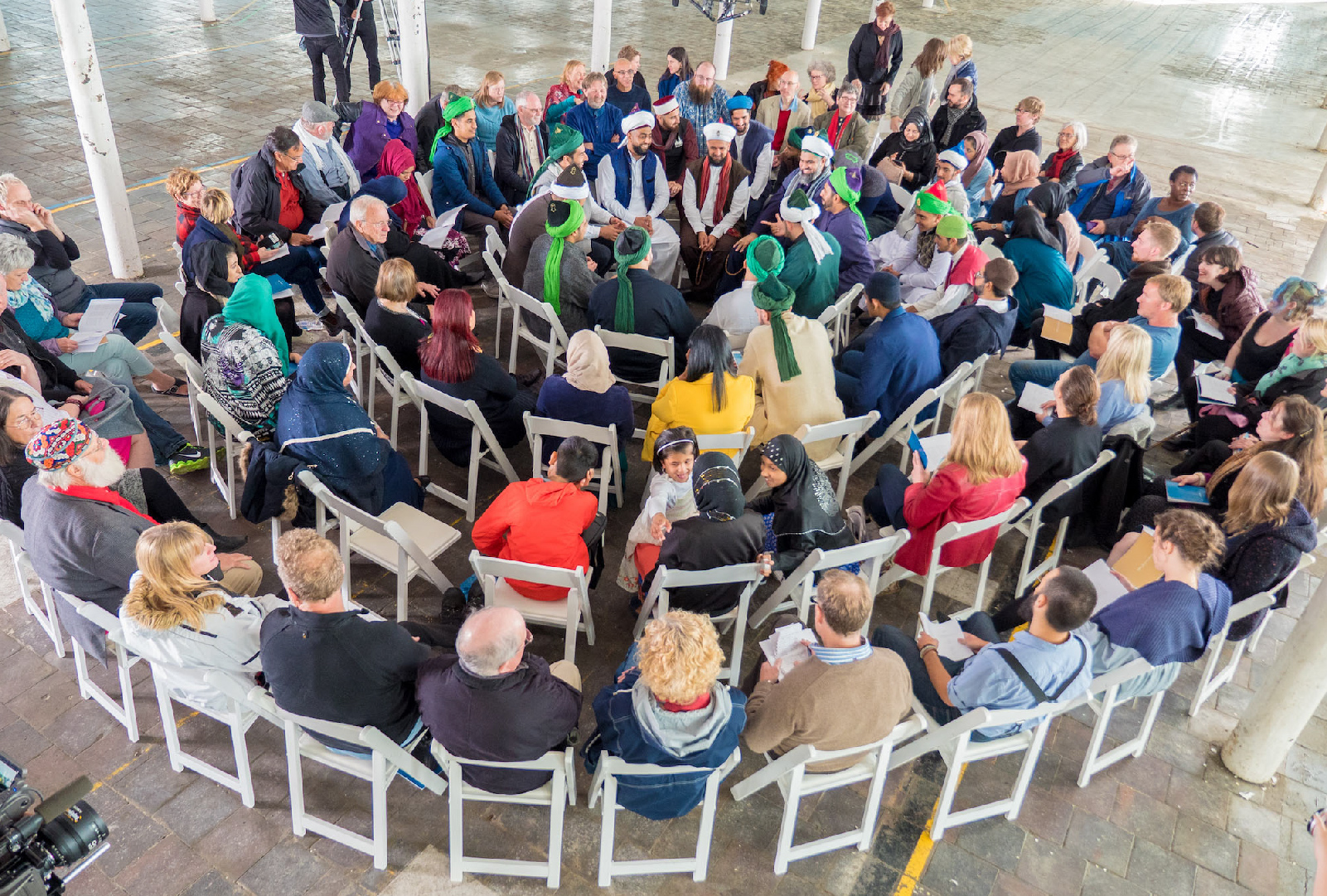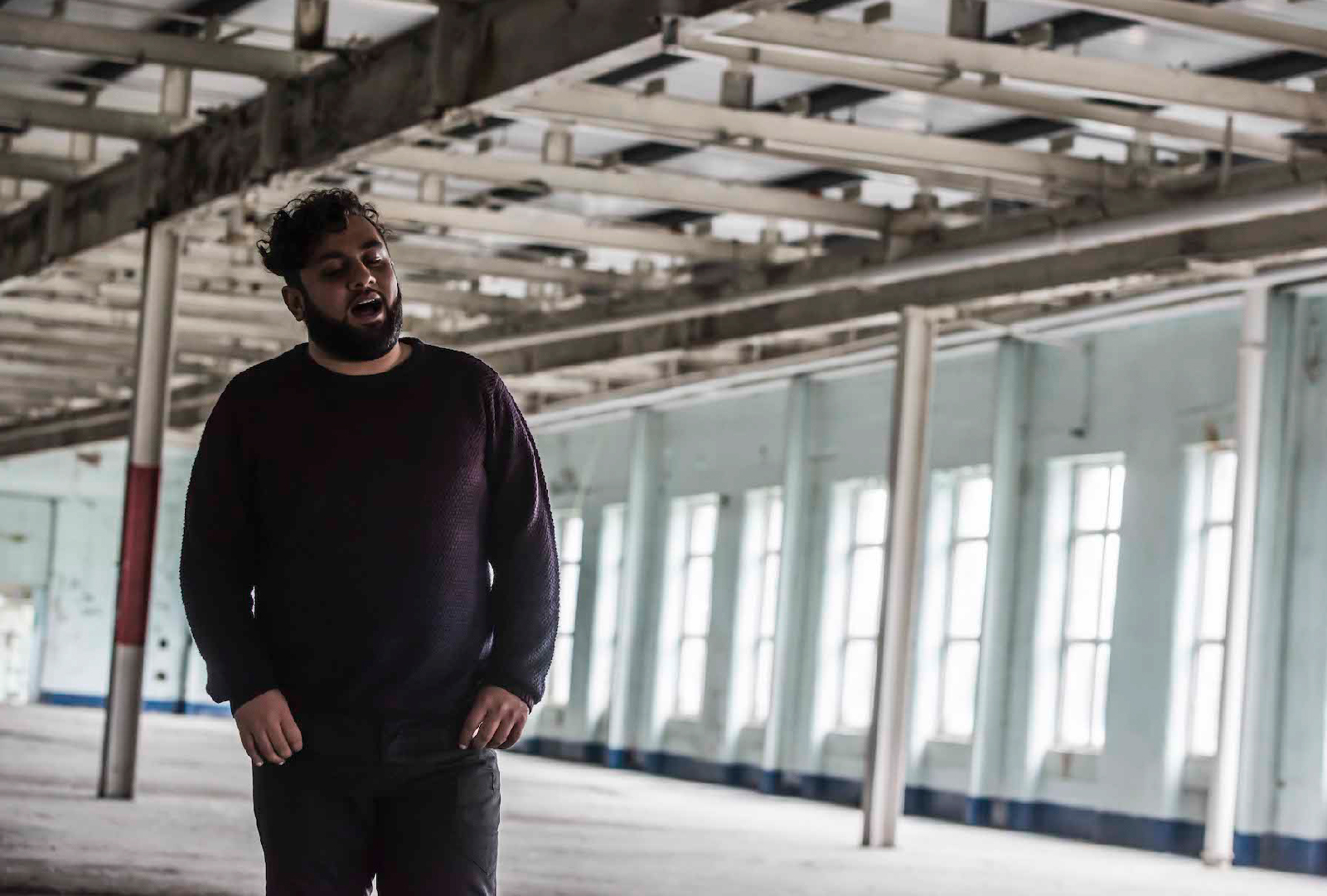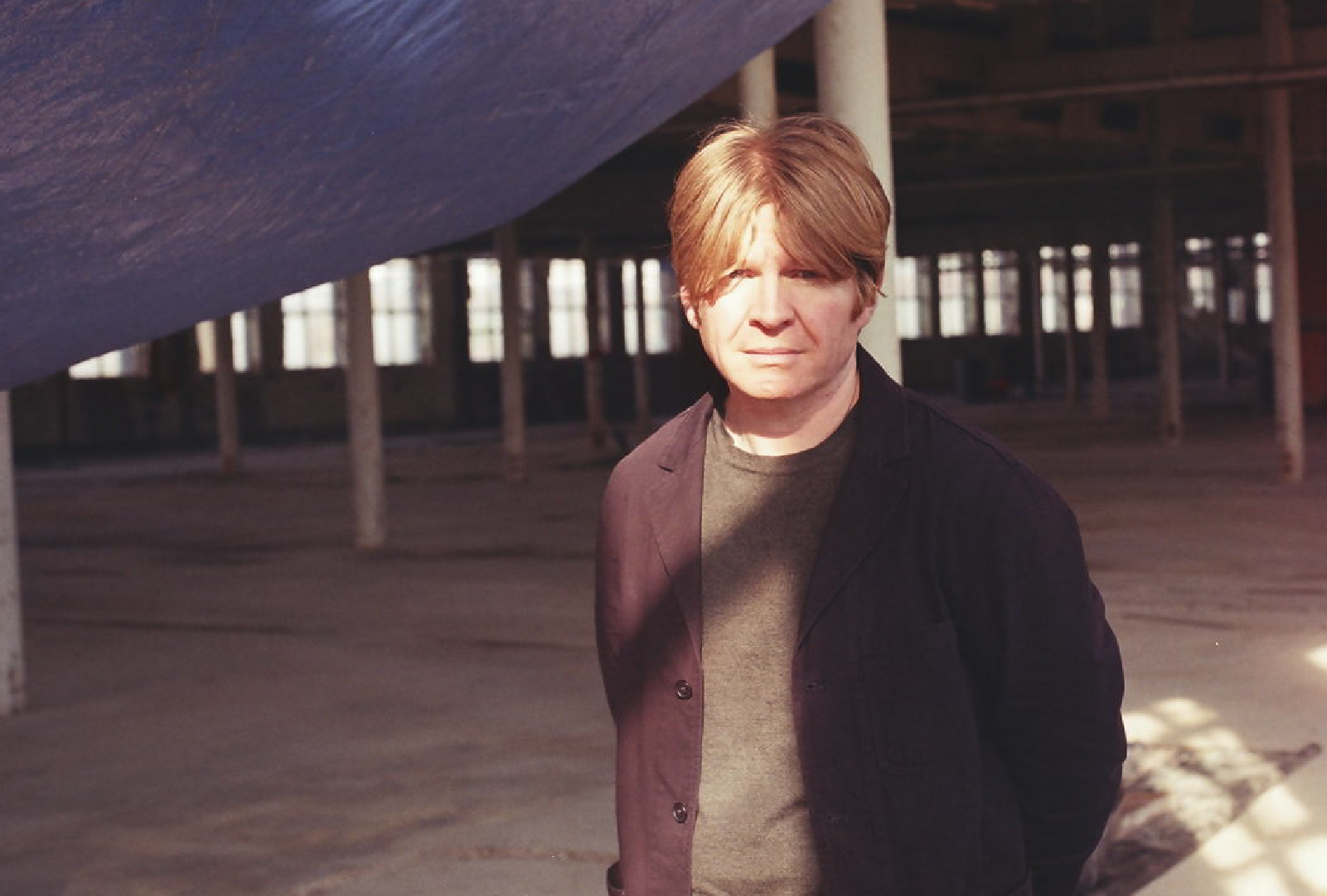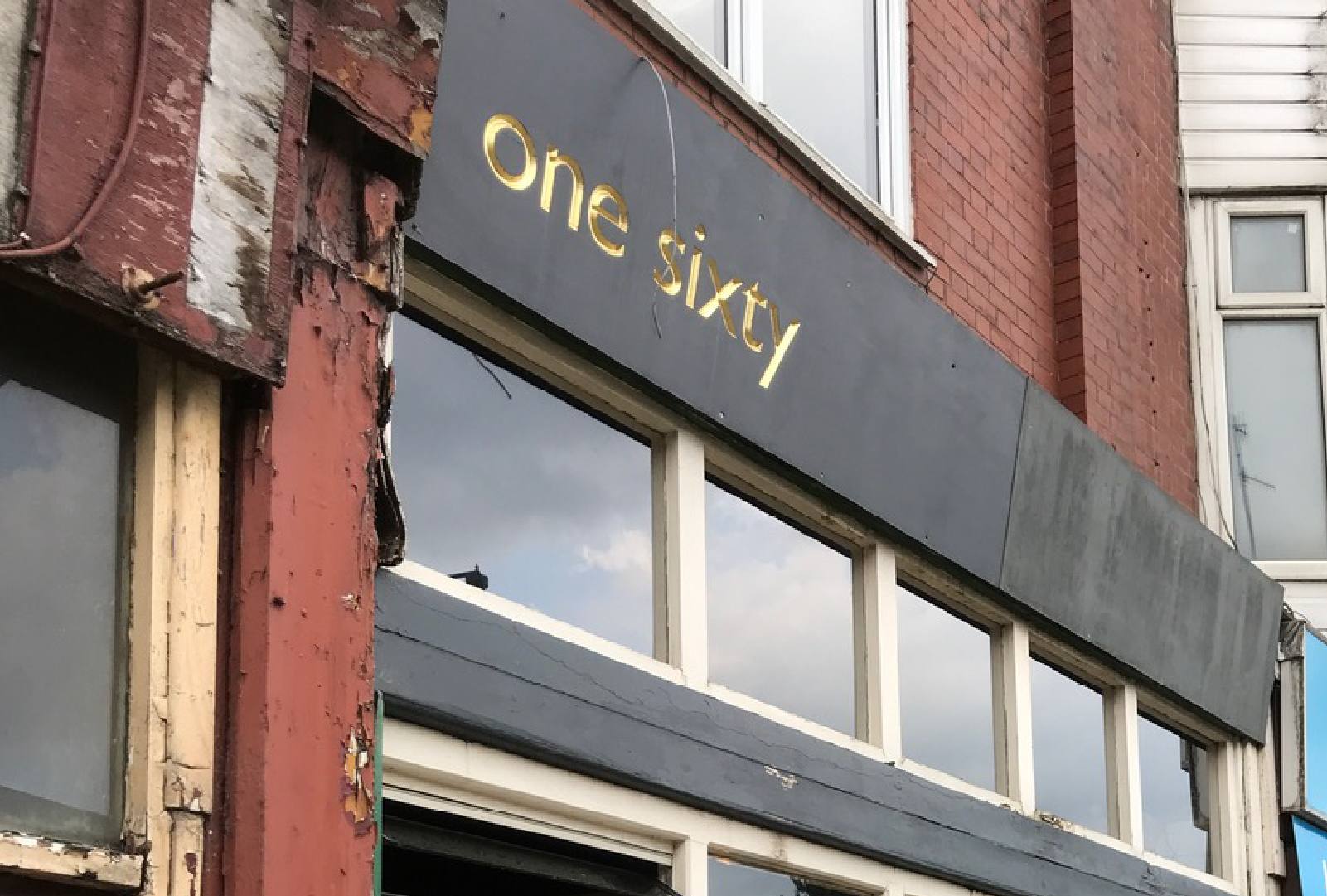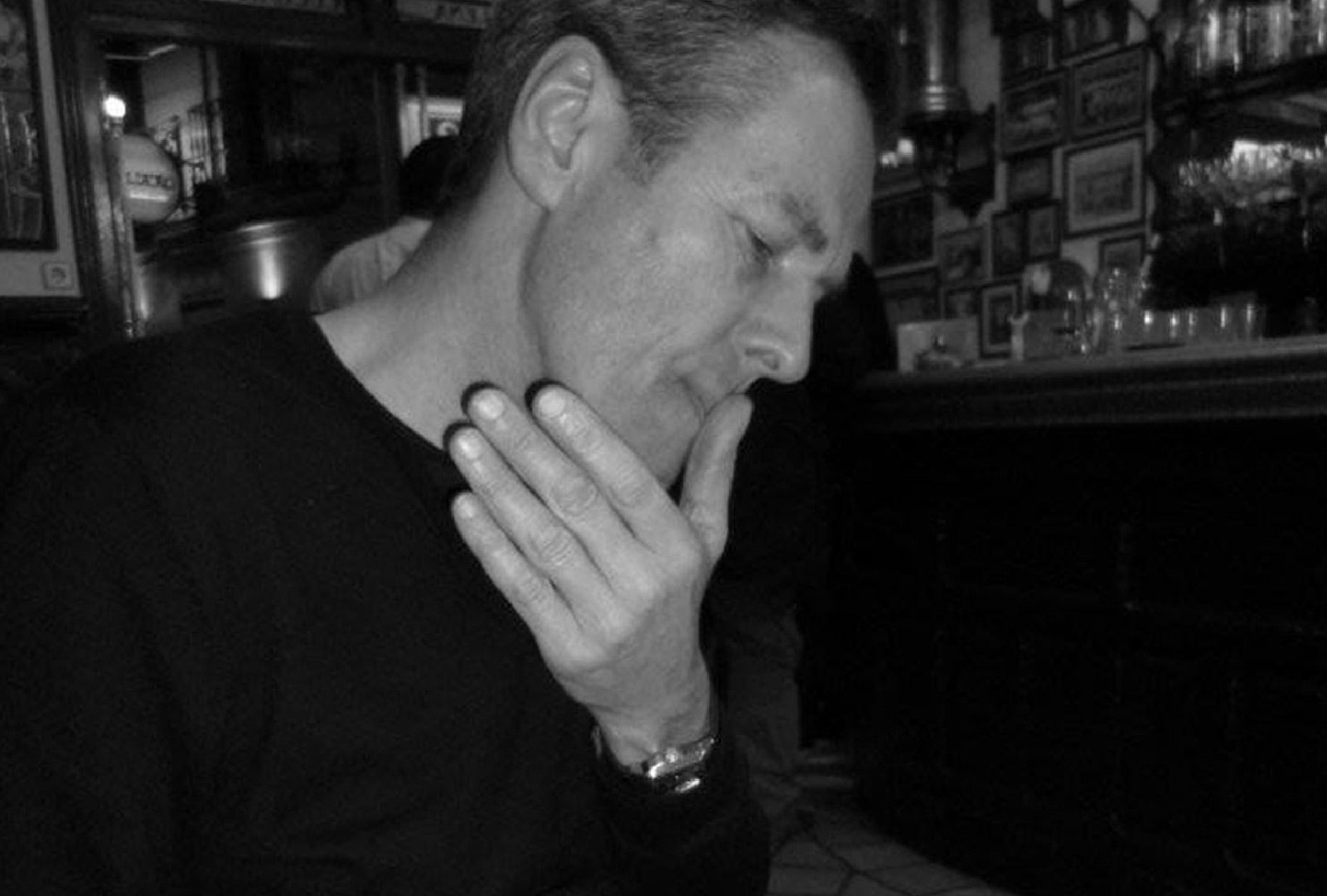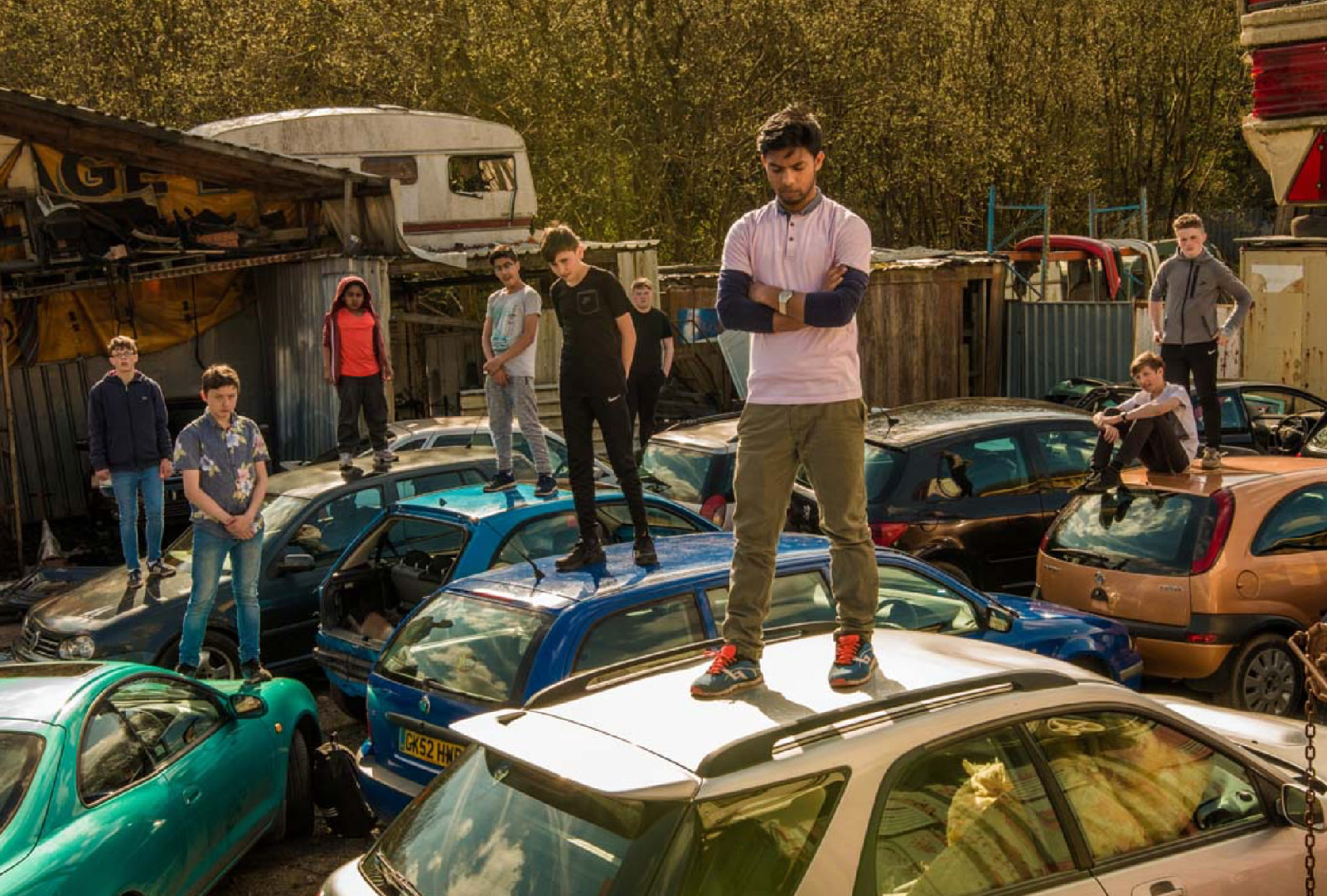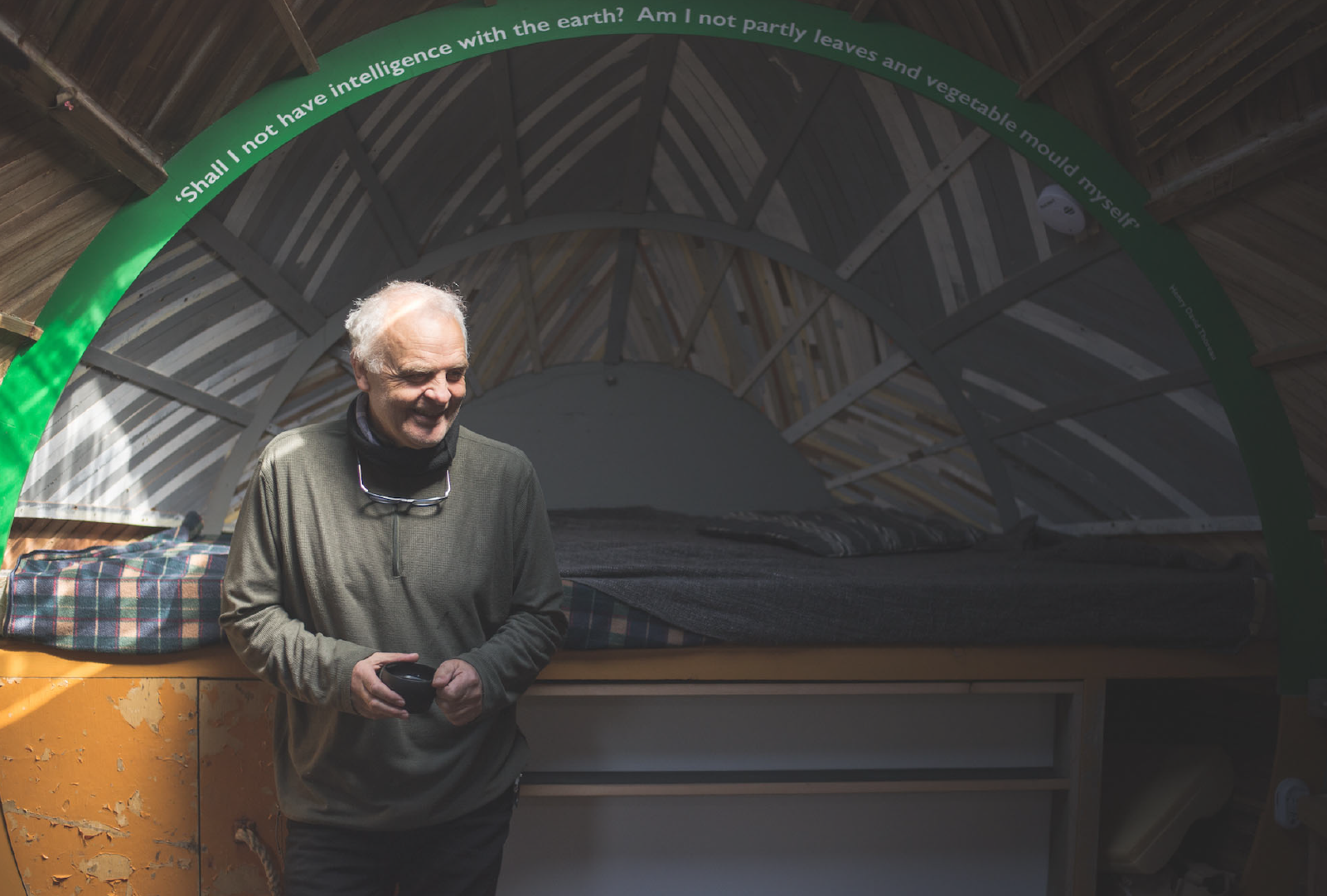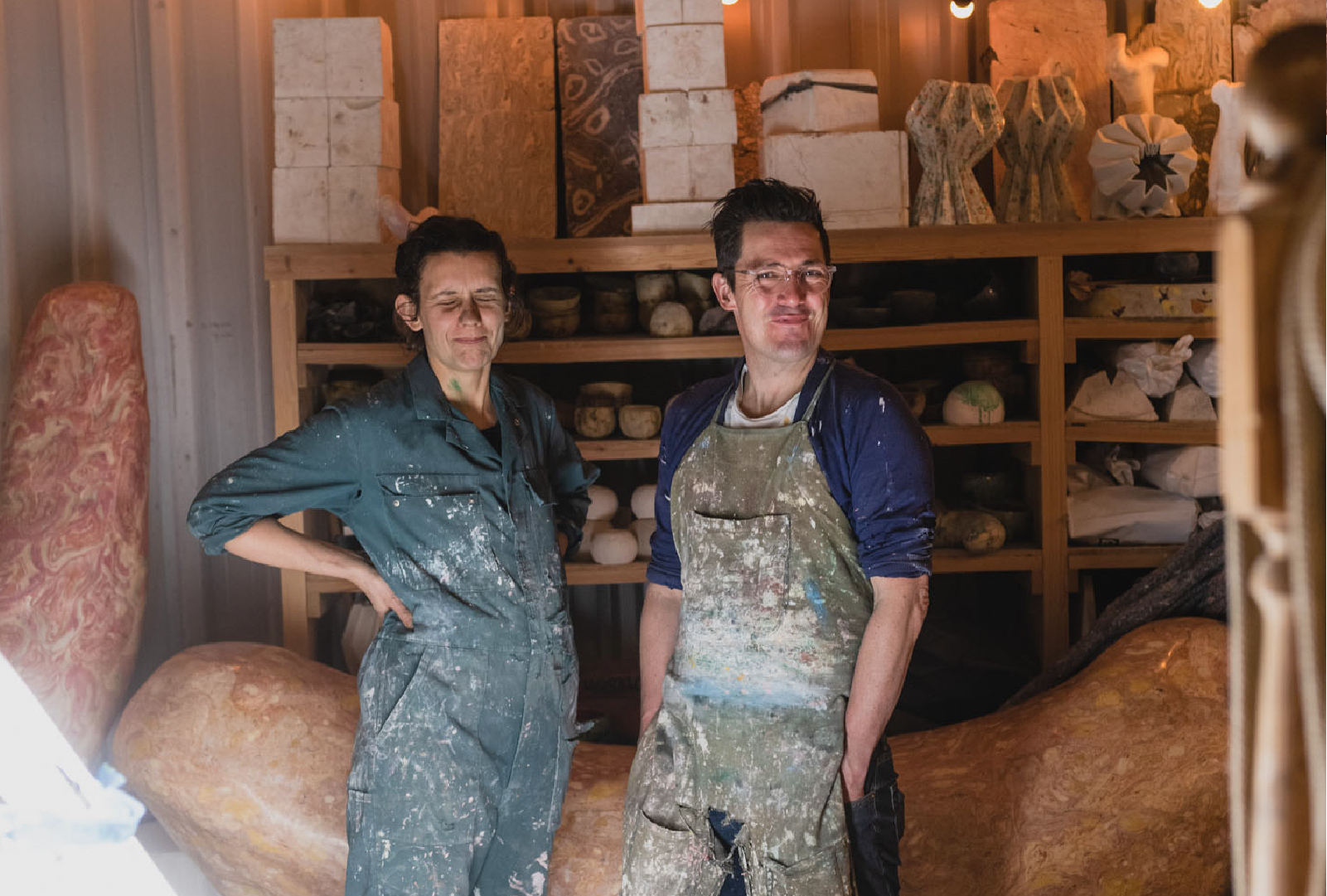Elena Jackson
In Conversation
AN INTERVIEW WITH LAURIE PEAKE
Art in Manufacturing is the National Festival of Making’s headline commissioning programme – providing artists with an incomparable platform to make new work in and alongside some of Lancashire’s major manufacturers.
The groundbreaking series, co-commissioned by The National Festival of Making and Super Slow Way, has seen ambitious exhibitions; installations, performances, and sculptures gaining international press coverage and engaging 1000’s of visitors to date. Here curator, Elena Jackson talks to Super Slow Way Director, Laurie Peake about the programme.
www.artinmanufacturing.co.uk | Instagram |
www.festivalofmaking.co.uk | Instagram | Facebook | Twitter | YouTube
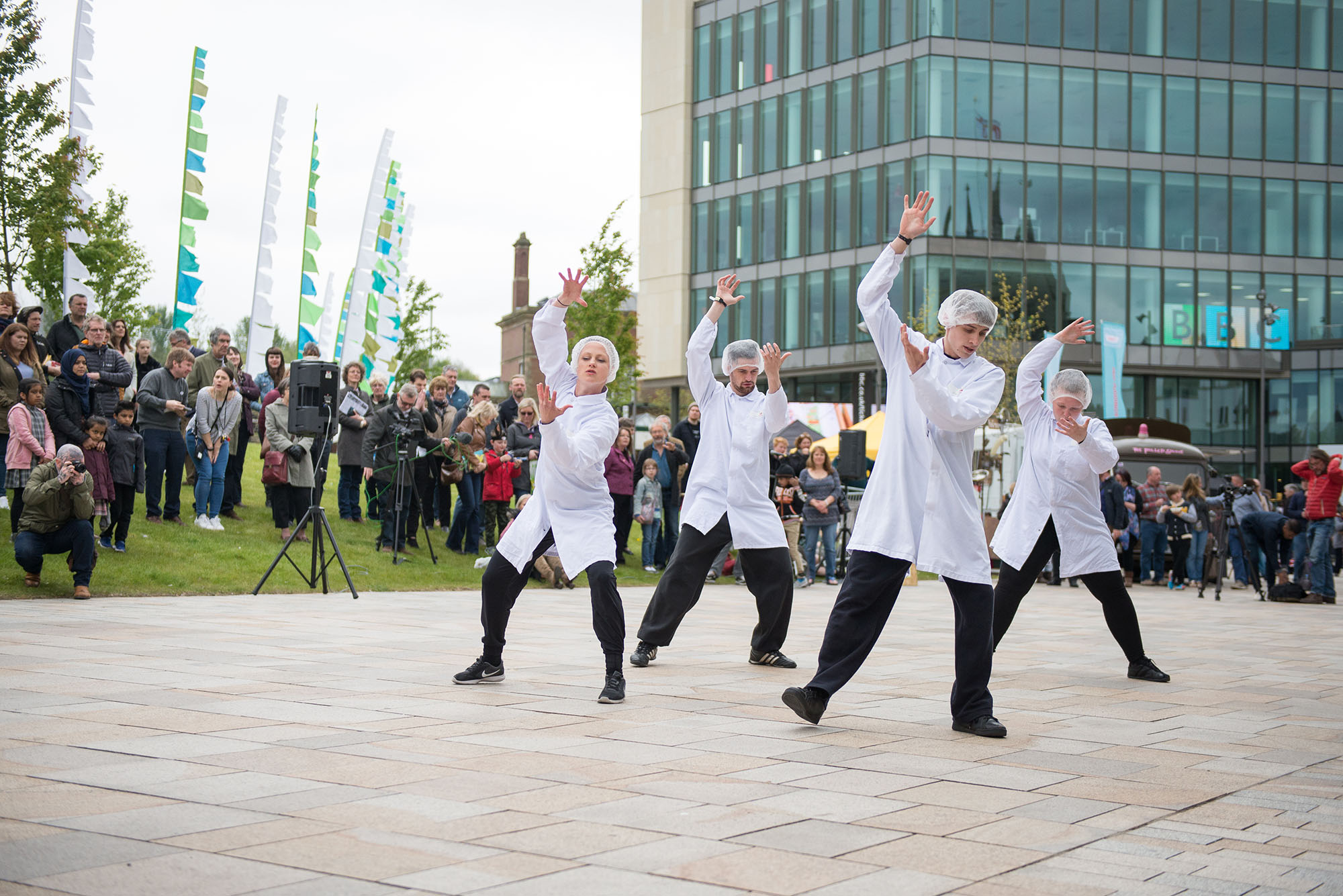
Ruth Jones and Cherry Tree Bakery, Art in Manufacturing 2017
PHOTOGRAPHER Richardtymon
LP
The Art in Manufacturing series of residencies has been fantastically interesting and successful. What was the original impetus behind the programme?
EJ
Art in Manufacturing is a residency programme embedded within the National Festival of Making. It came from the starting point of asking a question about what a cultural festival means to the place it’s created and sited in, and therefore belongs.
We were developing a creative programme in a place (Blackburn) where manufacturing accounts for a much greater number of jobs than the national average and has been part of the cultural and social fabric of the community since the industrial revolution. We wanted to find a way to involve manufacturers that was meaningful to them, to do something that offered them an opportunity for purposeful creative exchange that wasn’t about sponsorship or showcasing products but was about their history, people and expertise.
The programme reaches 100’s of people who may not naturally engage with art and it’s happening in a collaborative and participatory way in participants' own environment. In Season One, choreographer Ruth Jones worked with production line staff at Cherrytree Bakery who ‘donated’ their movements to the choreography - playing out the repetitive gestures that they use every day to pick up, fold, pack and move cake and biscuit products through the line. As part of the project staff were supported financially by the factory to arrive at work early, one day per week, for eight weeks to join a Movement Club that was inspired by Ruth’s training at the Trinity Laban Conservatoire and Rudolf Laban’s 1930’s work with mass manufacturing communities where he explored the physical nature of factory work. The commission resulted in an extraordinary performance between the workforce and professional dancers and has led to conversations between artist, factory and Art in Manufacturing about the potential for long term movement clubs for factory staff - an opportunity we’d love to explore over a longer period.

I got access to a unique manufacturing line of choreography associated with industrial baking, working with people of Lancashire with a specific skill.
RUTH JONES
For artists whose work can be limited by the scale of their making facilities, an open door to a factory is a unique opportunity, but it goes much further than access to machinery and materials. We are working at the intersection of art, industry and place; the immediate visual outcomes of the commissions, from sculpture to choreography, have their own value, but the programme is having a deeper impact on the perception of place and identity.
LP
So many of the manufacturers and their factories are largely invisible to the general public, do you think the programme has given them more visibility? What is the value in doing so?
EJ
The programme is exciting to factory owners as it allows them to become more visible via the artist, to local community groups as well as the festival’s 1000’s of visitors and online audiences.
PR and marketing is no doubt part of what makes the proposition attractive to manufacturers - high quality storytelling has helped us achieve international press coverage and is an essential part of the festival’s intention - we want to tell stories. It’s incredibly important that the work created here in Lancashire reaches as wide an audience as possible. Media coverage has been widespread - from the architectural work of Lazerian and the Cardboard Box Factory appearing on the front cover of US Interiors magazine to Anna Ray’s residency with Forbo Flooring inspiring the Preston based flooring company to make a documentary PR film from Anna’s studio in Kent, to home based manufacturer of pies, Zainab Bilal profiled in The Guardian in the article titled, “Lancashire living rooms: the backdrop to cottage industry revolution.”
The sense of pride generated is felt throughout the factory. Staff are supported to work with artists to share their making skills. As a result, staff feel valued and appreciated by management who are allowing them to take time out of their work day to explore their own, and the company's, creativity. On top of this, there is a huge sense of pride in presenting work at a national festival in their town centre. At WEC Group, artist David Murphy connected with the welding apprentices, tailoring his commission to draw on the skills they were studying for a forthcoming international welding competition. The welders contributed to the sculpture, In Practice, working closely with the artist on site to realise a collective vision. Each young apprentice visited the Festival with their family where In Practice was on show at Prism Contemporary Gallery - a collision of evolving skills and of industrial and artistic practice working together.
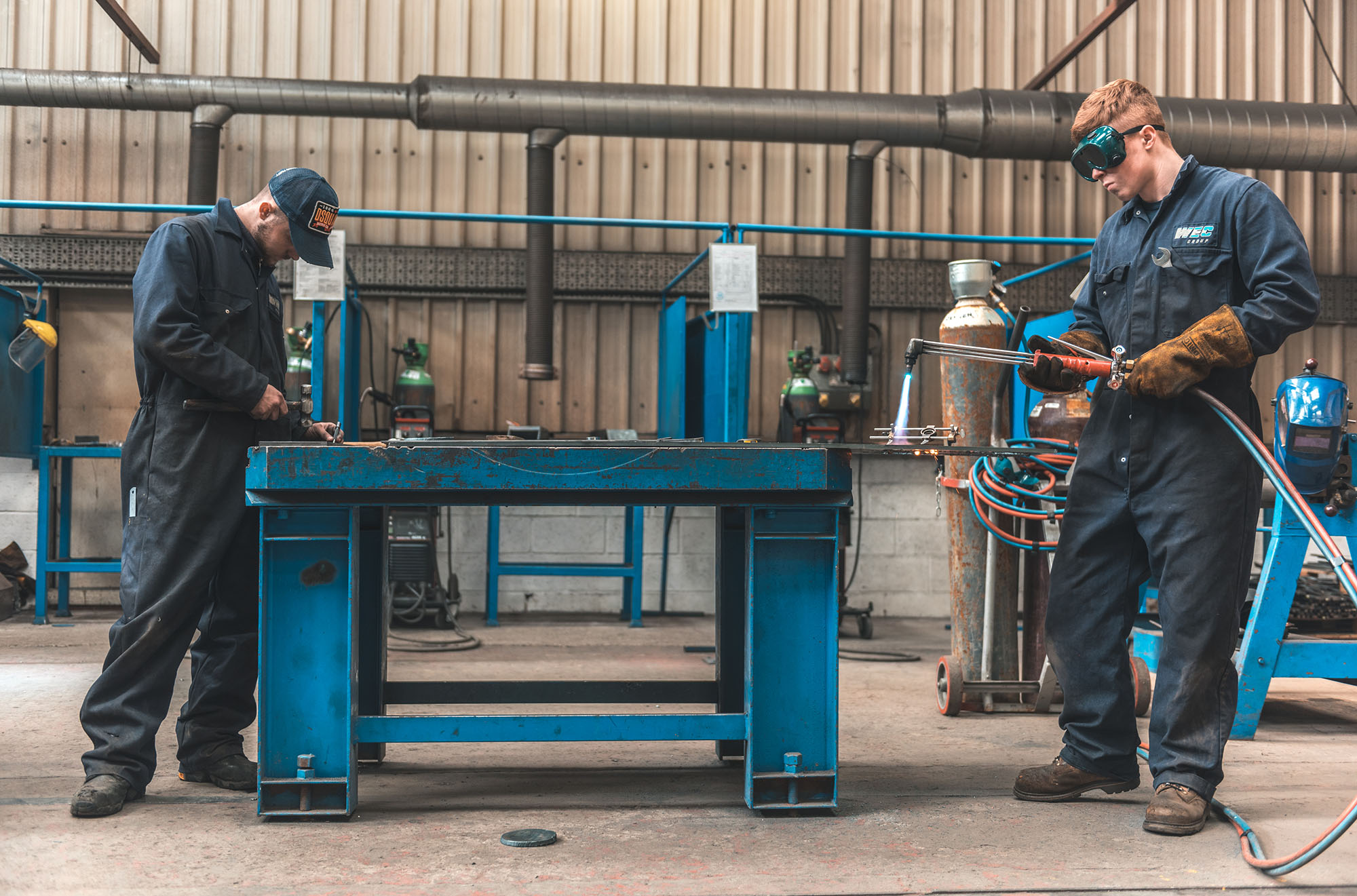
David Murphy and WEC Group. Art in Manufacturing 2018
PHOTOGRAPHER gs visuals
LP
What has been the general response of the workforce and management to having an artist working alongside them?
EJ
Certain companies had already worked with artists within the context of a paid contract and had an established understanding about what artists do, but they were used to following a brief and working towards a predetermined outcome for a fee. These companies were more surprised that we wanted the artist to just be present, to spend time in the workplace with the workforce, allowing them space to and explore, exchange skills and ideas and collaborate.
Working to break down barriers and normalise the artist in residence is an initial challenge - sometimes they’re perceived as being funny or strange and sometimes it can be an isolating experience. After the initial settling period however, often great individual partnerships are formed.
After being commissioned to work with Ritherdon in 2017, artist Nicola Ellis went on to agree to a two year factory placement with Ritherdon, a metalwork factory established in Darwen in 1895. Funded by the Arts Council, the placement was a continuation of work explored during Art in Manufacturing and involves the artist being on-site two days per week to produce, in collaboration with the workforce, a new body of work that will return to the Festival of Making and tour to other UK galleries.
Within the most successful residencies we have seen the workforce moving from being simply happy to skill-share, to them feeling completely invested in the work as stakeholders, collaborators and co-makers. The executive often reflects on a change in their own perception of their workforce, including their staff’s openness to creative expression and participation.

There is a mutual benefit for both parties from the collaborative relationship of Artist/Designer and the highly skilled practitioners at the factory. Both parties learn from each other.
HANNAH FOX
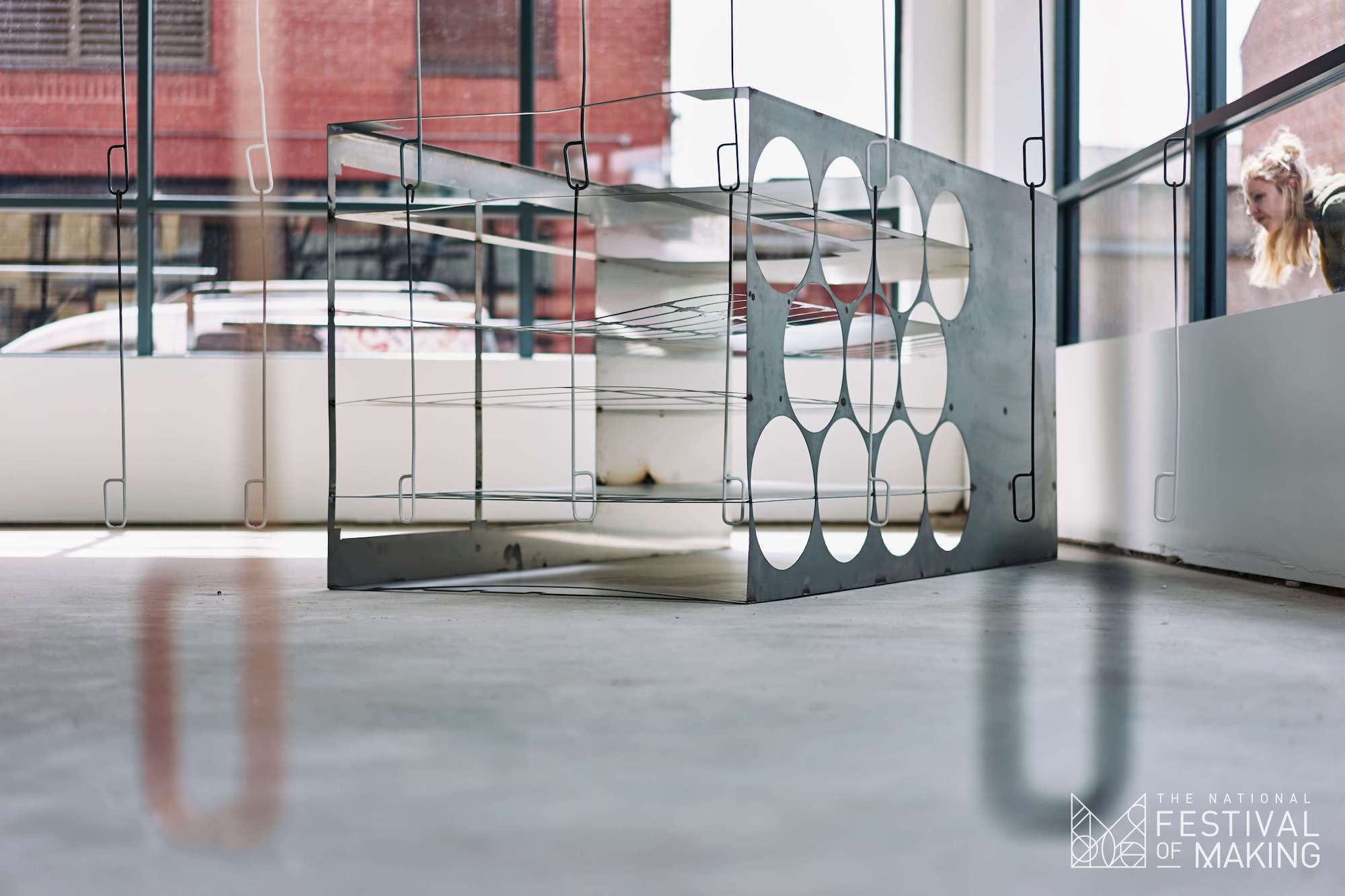
Nicola Ellis and Ritherdon. Art in Manufacturing 2018
PHOTOGRAPHER GS Visuals
LP
What has been the response to the programme from artists? What do they get out of the relationship?
EJ
When we conceived of Art in Manufacturing we knew that having access to mass, and craft based manufacturing practices and workforces would be an exciting proposition for artists who are exploring making, and making work with people. The opportunity to co-create new work with workforce communities paired with the public platform of the Festival to share the artistic outcomes with audience numbers of between 30,000 and 40,000 experiencing, critically engaging and often participating in their work has been enticing, with a huge amount of submissions to the annual call out over the last 3 Seasons.

Art in Manufacturing introduced new audiences to my practice.
DAKSHA PATEL
The relationships they form at the factories and within the Festival play an essential role in shaping the work and the legacy of their residency. Engagement varies in scale - at some manufacturers, artists work with tens of people whereas in other situations it can be more in depth one to one exchanges. Whatever the situation, artists have seen themselves as ambassadors for creativity within the workplace.
The programme has also led to long term relationships within the Art in Manufacturing community of commissioned artists and with their partner manufacturers who they establish lasting connections with. There is now an unofficial AiM Alumni and artists continue to collaborate together on new projects.

The Art in Manufacturing residency was a great opportunity for me as an artist to partner with a manufacturer that was sympathetic to my practise and materials. It allowed me to learn new skills from a team of experienced crafts people and for me to develop my practise in terms of size of vision. By having a factory behind me I could realise a body of work that would have been unattainable on my own and extremely expensive. The relationship that formed in that residency has stayed and allowed me to realise other projects with the Manufacturer as a partner in the production of other work.
JAMES BLOOMFIELD
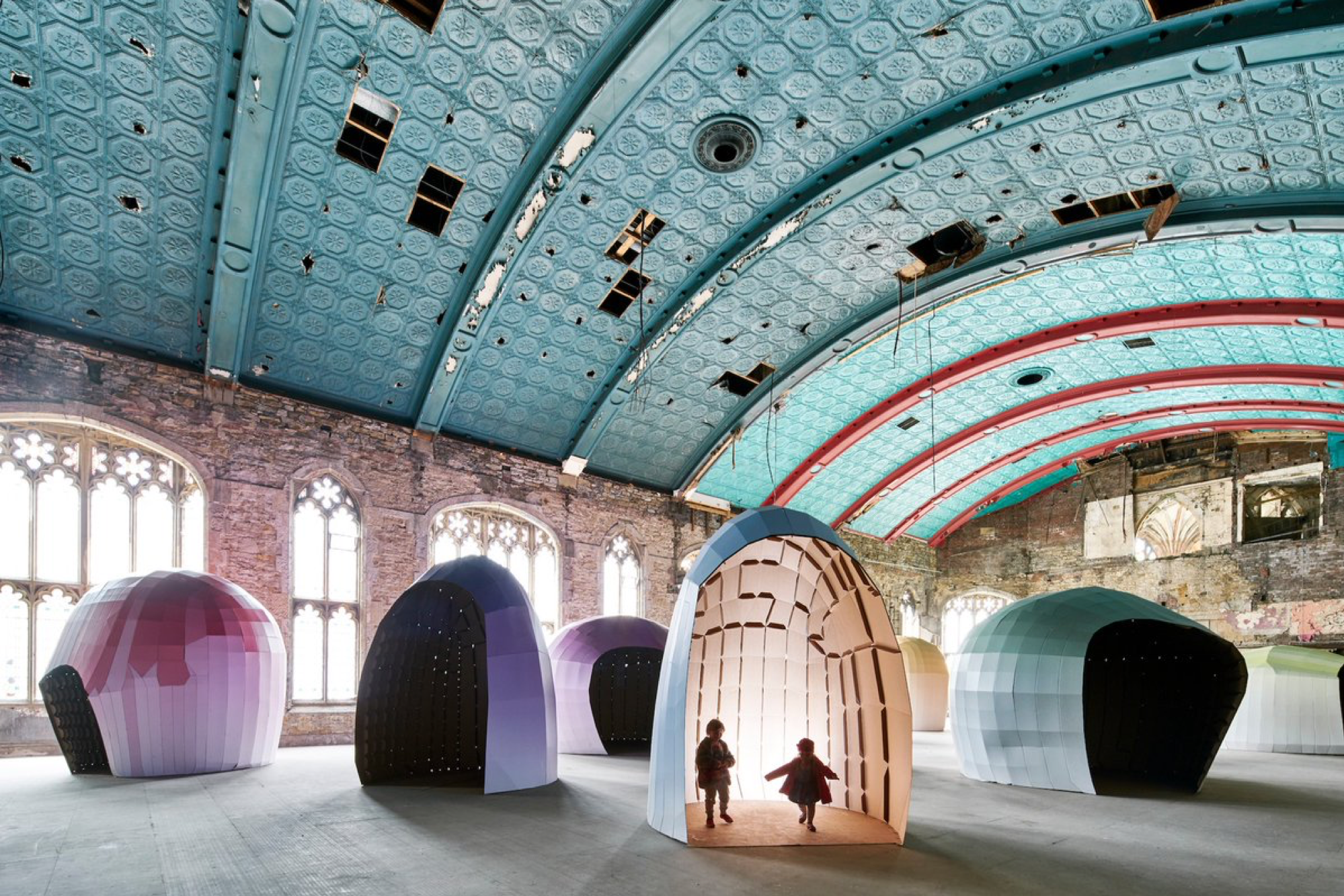
Lazerian and the Cardboard Box Company. Art in Manufacturing 2017
PHOTOGRAPHER GS Visuals
LP
There have been some impressive and exciting works resulting from the residencies presented at the National Festival of Making but what happens to the work and the relationships beyond the festival weekend?
EJ
An ecology has grown within and around the Festival based on a model for stakeholder engagement that sees us engage with multiple organisations and individuals who collectively contribute to the creation of both the National Festival of Making and Art in Manufacturing. One of the richest outcomes is our relationship with manufacturers, many of whom have taken the programme into their organisations and contribute an enormous amount of time, energy and commitment to the Festival community. In some cases, we have held repeat residencies, based on the strength of the partnership and the ongoing opportunities for artists; companies such as Cardboard Box Company and Darwen Terracotta have become central actors in the Festival family.
Often the initial residency is the seed of a longer term relationship or piece of work either between ourselves and the artist, or artists and factories. Liz Wilson, one of our Season Three artists will start a residency with a second factory in 2021, supported through the Arts Council’s Artists Development Grant. More recently, Season Two commissioned artists Dawinder Bansal and Martyn Ware launched a new work with Waltham Forest and the Barbican.
Continuing to support the artist to develop practice after the residency, supporting continuation bids and enabling relationships is an ongoing arm of the curator and festival commitment to the commissioned artists and is part of our aim to establish long term working practices with individuals and organisations.

The experience of witnessing large scale, mass production. How a factory is run and how materials are managed. This is food for thought for future projects, collaborations and for artwork fabrication.
ANNA RAY
In terms of the work itself, each set of circumstances is individual - some of the artists create ephemeral works such as a performance, whereas many of the works created are things that need quite challenging storage considerations, often manufacturers store work on site, giving us the opportunity to re-show pieces in the future. In some cases, the works have been so totally embraced by the factories that they have been put on permanent display, such as Michelle Wren’s work with the wallpaper maker, Graham and Brown, which is now in the factory’s staff entranceway.
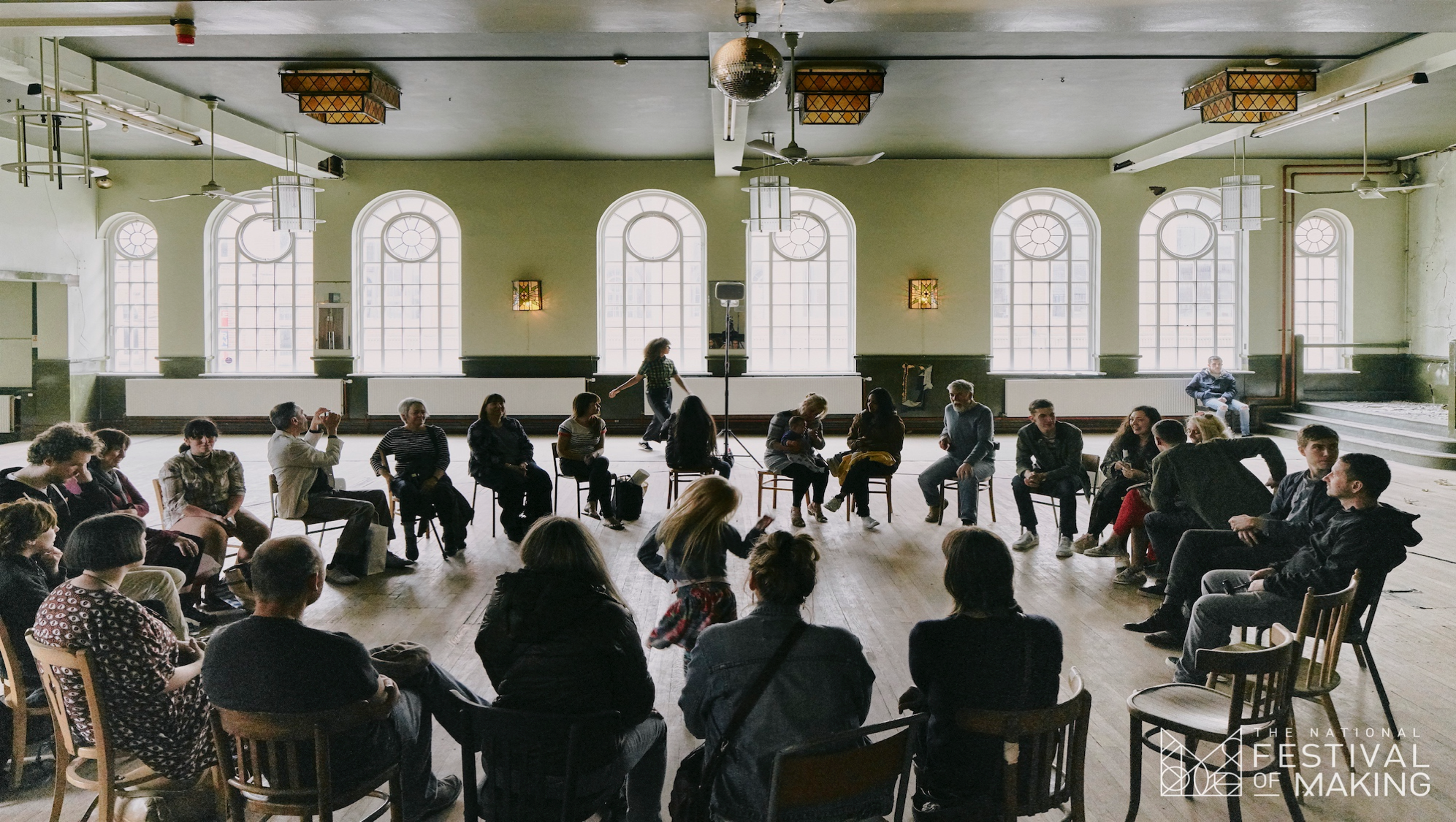
Martyn Ware and the Manufacturers of Lancashire. Art in Manufacturing 2018
PHOTOGRAPHER gs visuals
LP
What are your plans for the future development of the series?
EJ
It’s an exciting time as we’re just starting to understand the impact and legacy of the work created for artists, manufacturers, the Festival and the cultural sector in the region. It’s important that we look at the infrastructure and systems around the programme in order to develop it. Part of that is to do with funding - in an ideal world we would like to work within funding structures that support longer term residencies and allow artists to work more deeply.
We’re developing ways to better collect data around the residencies in addition to our festival evaluation; there are some really exciting outcomes and experiences to capture so we’re looking at partnerships with the regional universities and Creative Lancashire to more efficiently capture the outcomes of each placement - we want to know more about the impact Art in Manufacturing has on factories and artists.
As the Festival and the commissioning has grown, both elements have gained traction as influential activities that are supporting the growth of the region’s cultural ecology, so we’re exploring what wider role the programme can play, particularly as Lancashire’s bid to be City of Culture 2025 develops. Whilst Art in Manufacturing began with a series of Lancashire based residencies, as its national reputation develops we are looking at placements in factories outside of the county.
Having now created a significant body of work, we are looking at touring and exhibiting work nationally and internationally with galleries and other festivals. We’re also in the process of launching an independent Art in Manufacturing website which will become home to an archive of project material and a new space for the commissioning programmes evolving work.
2020 was a challenging year for the festival, programme, community of artists and practitioners, and for the industrial sector. As the pandemic hit in March, we took the decision to pause all artist residencies but it is a testament to the relationships formed that those residencies are now re-starting - albeit with necessary health and safety protocols in place. Three previously announced commissions - Tim Denton + OEP Building Services; Raisa Kabir + John Spencer Textiles; Hannah Leighton Boyce + Darwen Terracotta and three as yet unannounced placements will all feature at the National Festival of Making in June 2021. If anything the pandemic has shown us that cultural expression, moments of shared experiences and gathering is vital to our sense of self and the way in which we see the world. There may be adjustments to how work is curated, presented and experienced but we’re hopeful, as are the commissioned artists and factory partners, that together we can create more remarkable work as part of Art in Manufacturing Season Four.

The AIM commission provided me with a unique opportunity to work collaboratively with a manufacturer to develop a body of work over a three-month period. This extraordinary pairing allowed me the time and resources to explore new methodologies, machinery and ways of working… Ultimately this provided an inclusive and accessible platform for manufacturing communities with little engagement in the arts to participate, explore, question and engage in a meaningful exchange with an artist; an experience mutually beneficial for both parties.
LIZ WILSON
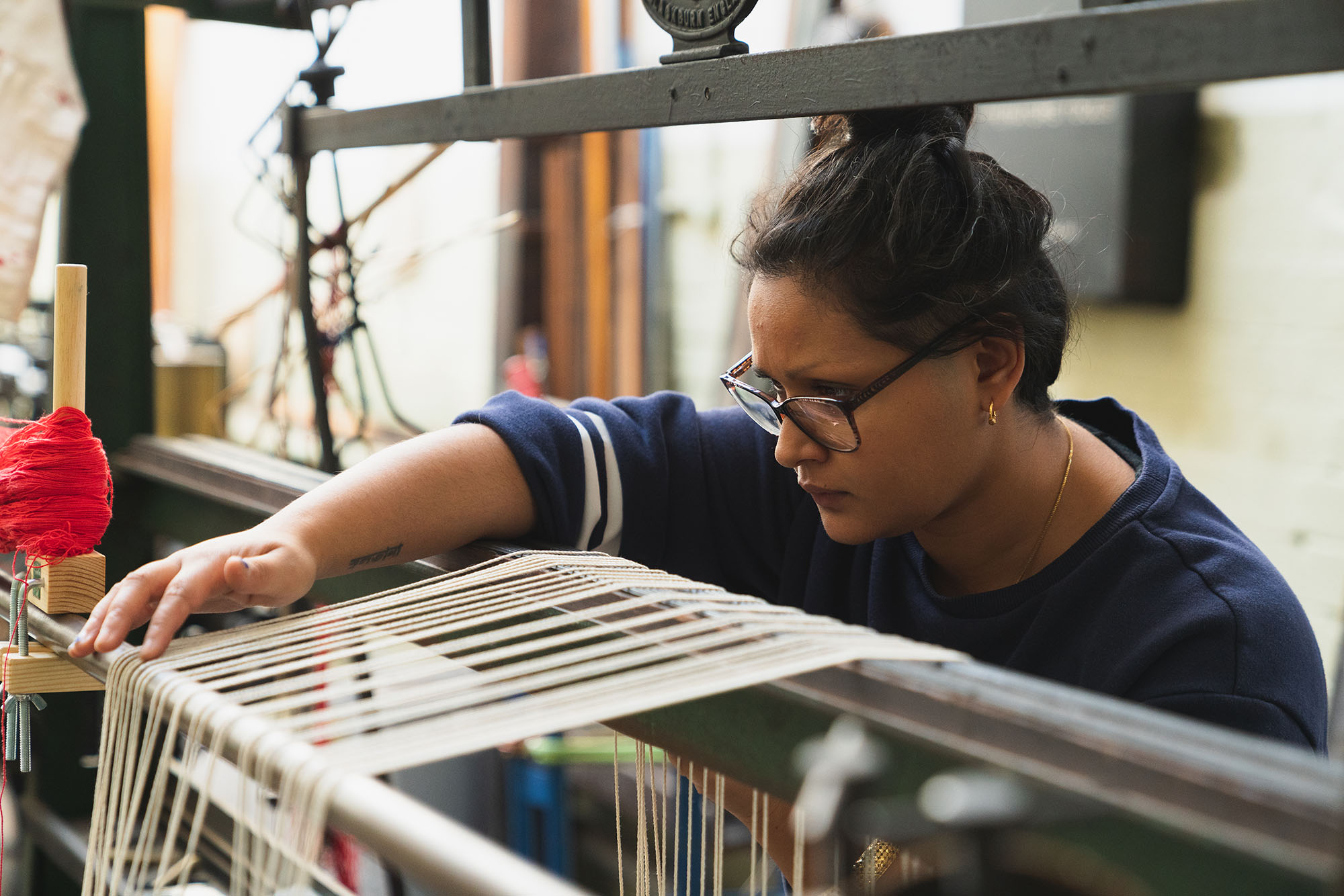
Raisa Kabir, John Spencer Textiles and Queen Street Mill. Art in Manufacturing 2021
PHOTOGRAPHER Richard Tymon
Articles

